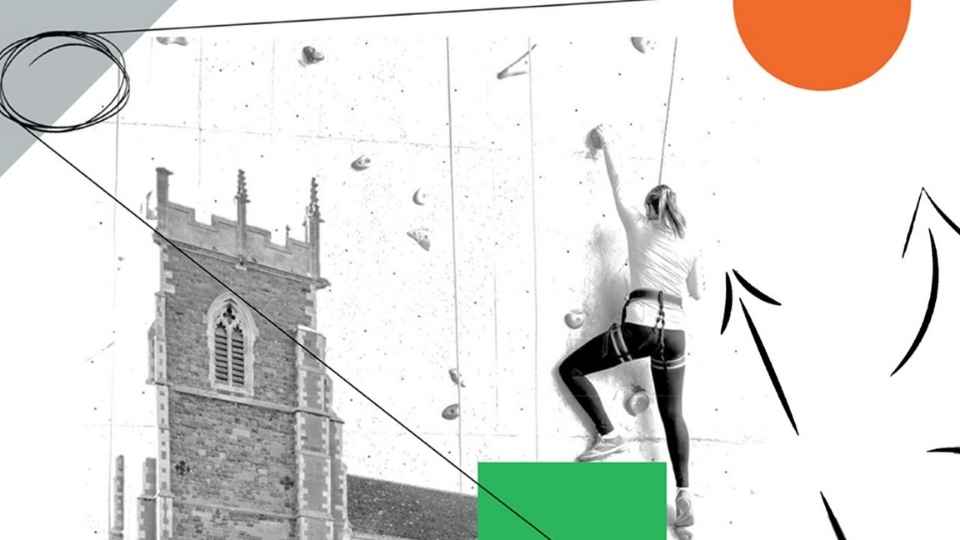
The Road to B Corp™ Certification: Future Leap’s Journey
May at Future Leap with Megan Gallagher
Good Employment Charter
B in the Know: The Routes and Benefits to Becoming a B Corp
March at Future Leap with Alan Bailey
February at Future Leap with Katherine Piper
“Just being 100% renewable in itself was a piece of activism”
Shouting Sustainability from the Rooftops with Molly Byrne
January at Future Leap with Katherine Piper
Unforgotten Spaces and Circular Cities
A thought-piece (and mini- Bristol quiz) by place-strategists: Futureground
By 2050 it is expected that 66% of the world’s population will live in cities. As the urban population increases and the needs of cities inhabitants change, the demands on the built environment and fabric of our cities inevitably change. The notion of circular cities concerns their constant regeneration, and the flow of materials this entails. Regeneration not only equips cities for tomorrow’s residents, but the process of urban transformation itself demands creativity and effort, which brings vibrancy, opportunity and social value. Take the quiz below to see some Bristol examples!
When the need for adaption is ignored, buildings can become increasingly under-utilised. Low utilisation often translates to poor economic performance, depleted morale, under-investment and further degeneration. Without an injection of creativity and energy, under-utilised buildings can all too easily become un-utilised; empty, shut-up and neglected. Even unoccupied they remain costly and risky in terms of security, maintenance, fire protection and on-going management burdens.
The longer empty buildings are left un-used, un-heated and un-maintained, the more unsightly and dilapidated they become, and the more difficult (and expensive) they become to re-use or re-purpose. Our cities, towns and neighbourhoods are full of such forgotten buildings and hidden spaces. From abandoned basements to rooms over shops, empty garages to underused warehouses.
On our streets and in our communities, such forgotten buildings are a pervasive sign of hyper-local neglect and have a detrimental impact on people’s mental health and well-being. Consciously or unconsciously these forgotten buildings speak of better times, unmet needs and poor prospects. In a resource-constrained world the inequity of such blatant wastefulness makes people in need of homes, or space, feel angry, disillusioned and let down. Dereliction is called out as an environmental- and social-crime.
But conversely the opposite can be true. Bringing a forgotten building back into creative and purposeful re-use, breeds hopefulness and attracts people, community and local investment. Culture-led regeneration that responds to the social-history and needs of a specific place, is important in mitigating against risk of gentrification or homogenisation of our communities. Unforgotten buildings renewed and revitalised, return to being assets, not only for their owners and new-users, but for all who benefit from the investment and animation in their area, or are encouraged by the demonstration what they understand to be needed, being done and being do-able.
Bristol is a city that boasts many great examples. We wonder how many of these you know? Take the test!
(Answers at the end)
- a) A warehouse turned technology incubator?
- b) An open-air swimming pool turned performance space?
- c) Two former public toilet blocks turned cafes?
- d) An empty railway ash pit turned immersive theatre and music venue?
- e) A laundrette turned cafe and live music venue?
- f) A police HQ turned prison turned youth hostel?
- g) Four former churches turned into a climbing centre, a circus school, a venue and a sustainable business co-working hub respectively? There are both many more examples and many more forgotten buildings needing re-imagining.
Retrofitting, re-purposing and avoiding obsolescence are critical in decarbonising our cities. Reuse of buildings lengthens the justification for the CO2 emissions associated with their original construction (the embodied carbon), and prevents further CO2 emissions associated with demolition, waste processing and the production of replacement materials and structures.
Continual regeneration and adaptation of the built environment is needed to allow cities to constantly re-invent themselves. It is reliant on creative and entrepreneurial individuals and organisations with the vision and tenacity for bringing about transformational change. Everything is meanwhile use. Flexible building use is a function of both spatial and material features (layout, structure, services) and creative operational solutions, which allow for transitional (e.g. pop-up/meanwhile uses) and layered uses (e.g. bringing together affordable workspace, community events space and last mile logistics hubs). Re-purposing buildings requires creativity in design, delivery and operational solutions, often including novel occupancy models.
At Futureground we are working with asset owners and managers to help them guard against wasted resources and missed opportunities, and rather to unlock social, environmental and economic shared value in their communities through our Unforgotten Spaces programme. Each project demands a different approach, but we tend to recommend four sequential stages: Dive, Discover, Develop, and Deliver, which we walk each client through. This maximises the opportunity at hand, helping clients arrive at the organisational solutions that succeed, as well as technical solutions that work.
Through our Unforgotten Spaces programme we bring creativity, experience and expertise to help our clients end-to-end in enabling the innovative use of their most un(der)-utilised spaces. We are always keen to hear from organisations overseeing declining built assets, large and complex estates, and those involved in creating and curating our cities. Do get in touch.
ANSWERS:
a) ScienceCreates b) Insane Roots production of Mid-Summer Nights Dream in Eastville park’s former Lido, c) Cloakroom café & Café on the Square, d) Loko Klub, e) At The Well, f) The Bristol Wing, g) The Church, Circomedia, The Mount Without & Future Leap, Clifton


